my watchmaker last Saturday.
They had been there so long (April and July) I had nearly forgotten what they were like.
Two were "rescue missions" -- watches I bought knowing I was going to put far more money in getting them restored and repaired than I paid for them.
The last was one of my wife's, a rarely seen backwinder.
1944 (or so) Omega Calibre 28
Omega introduced the calibre 28, a smaller 28mm thin version of the famous 30 mm manual in 1944, five years after the 1939 introduction of the 30mm.
Initially not shock protected, it had both subsecond and center second versions (28 SC), and shock protection was available.
Just like the 30mm, calibre 28 did not have the "rose gold" hued copper alloy plating, which was added later to the 30 mm. I'm not sure if the 28 mm ever got it.
After 1949, the 28 calibres were known as calibre 360 (subseconds), 361 with shock protection; and 370 (center seconds), 371 with shock protection.
This calibre was the base for Omega's chronometer dead beat seconds movment, calibre 372, of which they only produced 1,000 and sold 17. A commerical failure, Omega reputedly tried to get all of the watches shipped out back and destroyed most of them. But some escaped . . . . a grail watch for sure.
Omega only produced 94,000 of all varieties of calibre 28 and calibres 360-372. Compare this to the 3 million 30 mm calibres produced and you can understand how this one is a bit out of the ordinary.
My example had good points and bad points.
Good
- 18k gold case
- Movement in good shape
- Older movement, pre-1949 as it has no calibre number -- perhaps as old as 1944
- Interesting dial layout with large subseconds and applied gold mixed Roman/indices
Bad
- The case had several bad dents
- What turned out to be a slot for the crown stem appeared to be a hole in the case back
- Dial refinished so badly I could have done better with a crayon
- Rotten and brittle crystal
- Strap was a Speidel bracelet in far from its best shape (and it didn't start with a good shape)

Here's what I got back

Before and after

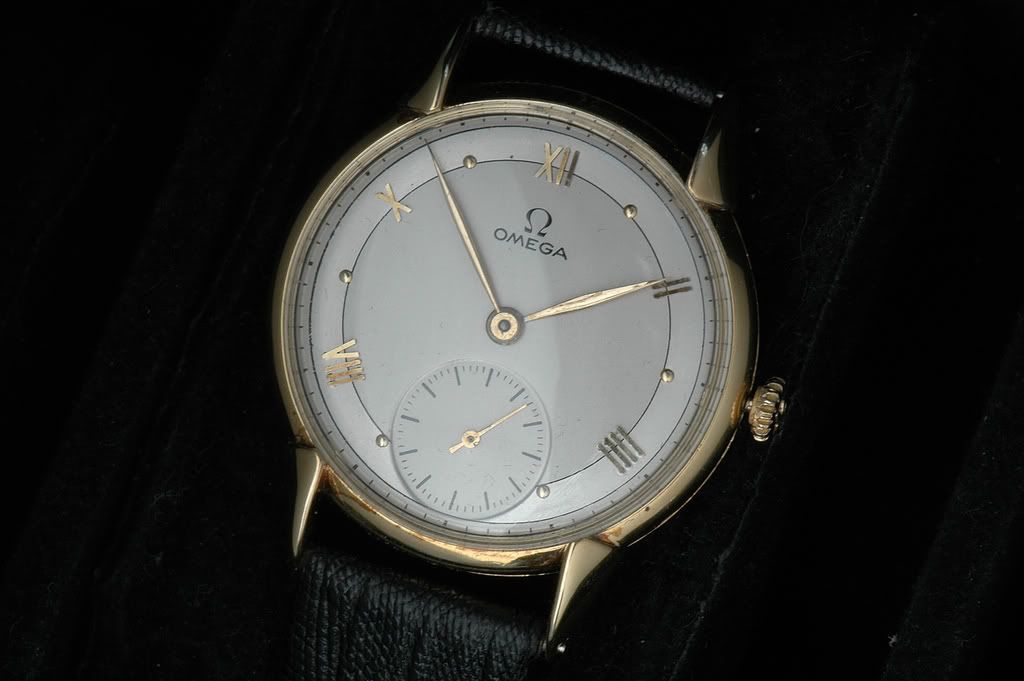
The movement is in good, but not outstanding shape.

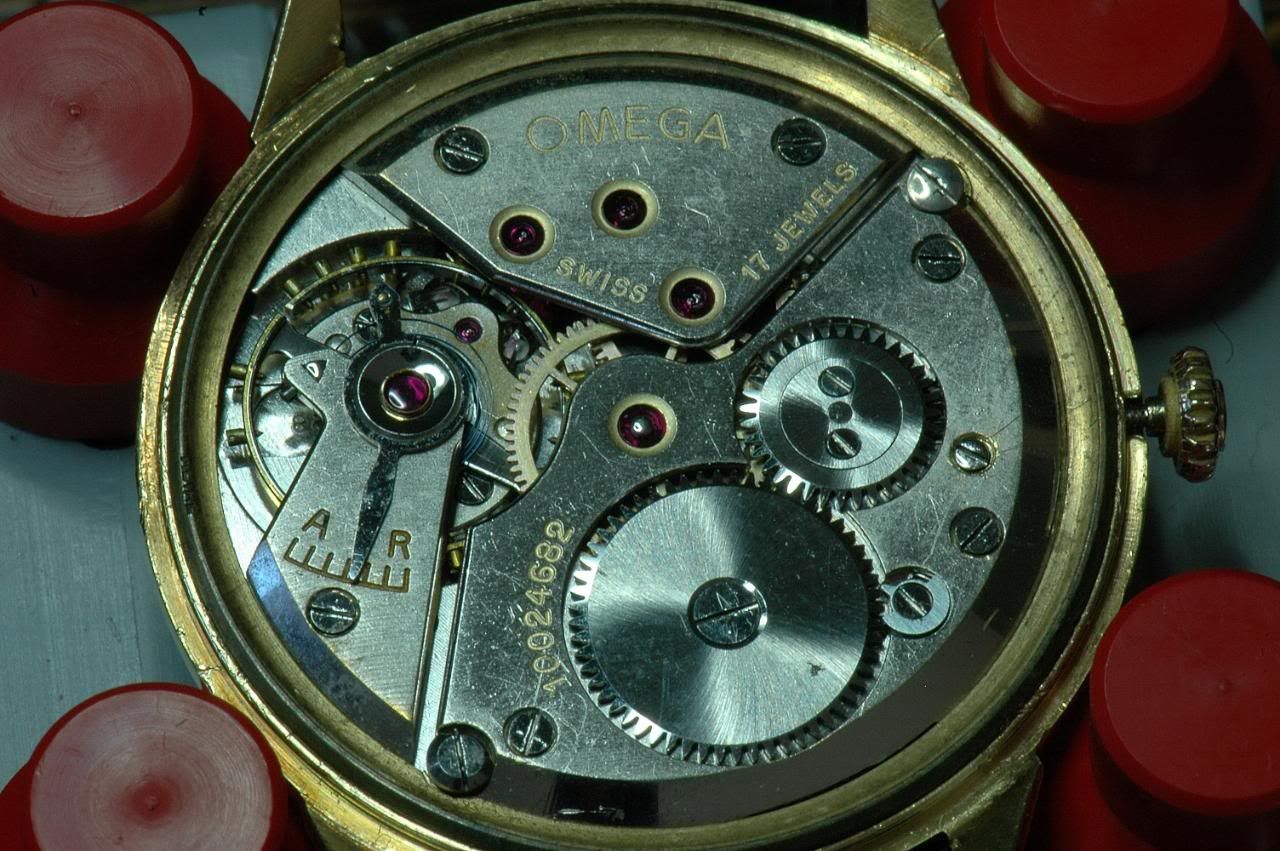
and I got a good photo (finally!) of the difficult to see engraving under the balance wheel Omega used to do (before calibre numbers began in 1949). Easy to get since it was just '28'.

It's just a good looking, no nonsense movement.

The case is not perfect, and the crown is probably incorrect, but am I not concerned.

The inside of the case back hints at the long history of this watch.
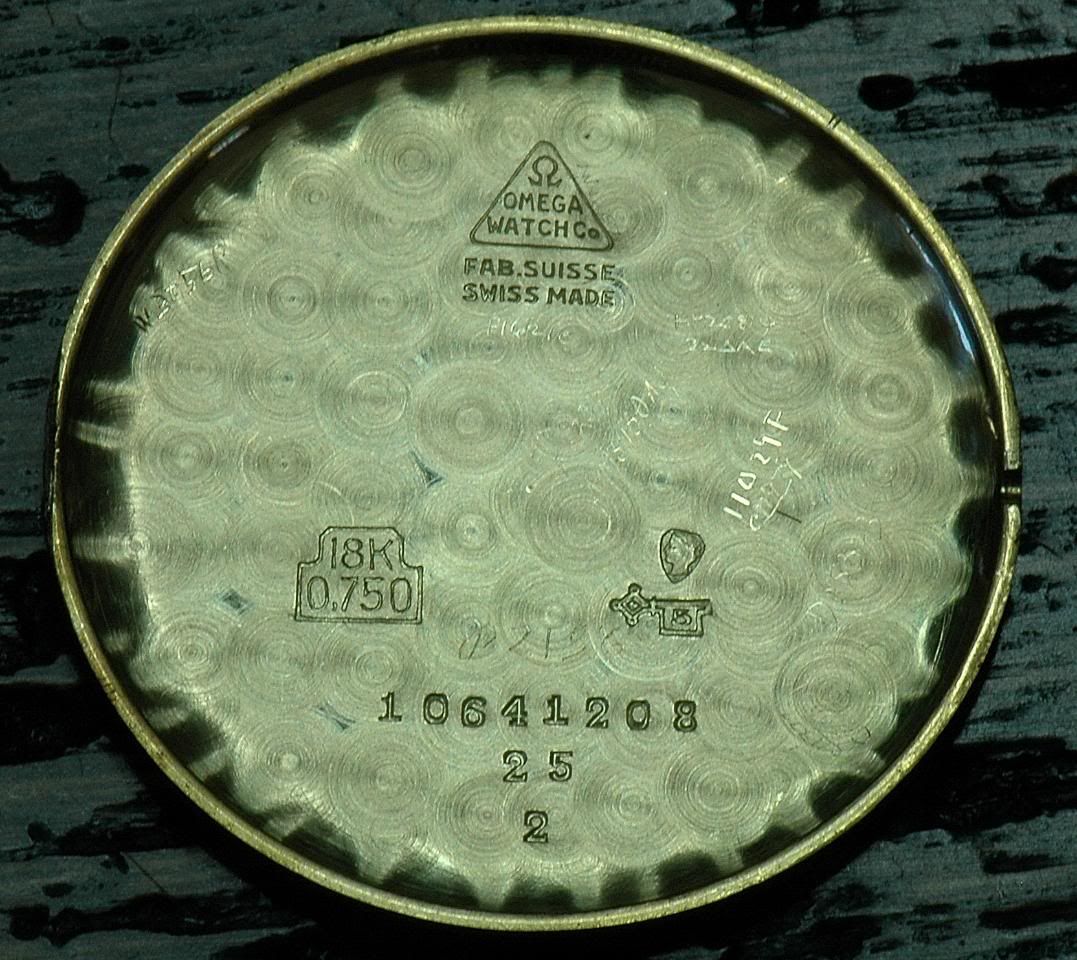
I found it odd that it did not have a model number on the case back. Omega began engraving model numbers in the 1940s . . . ?
A bit small for modern tastes, the case measures 32.5 mm. Below it is compared to a 1949 Centenary automatic with a 30.10mm movement and a modern Speedy, with a 27.5 mm movment (the smallest of the three).
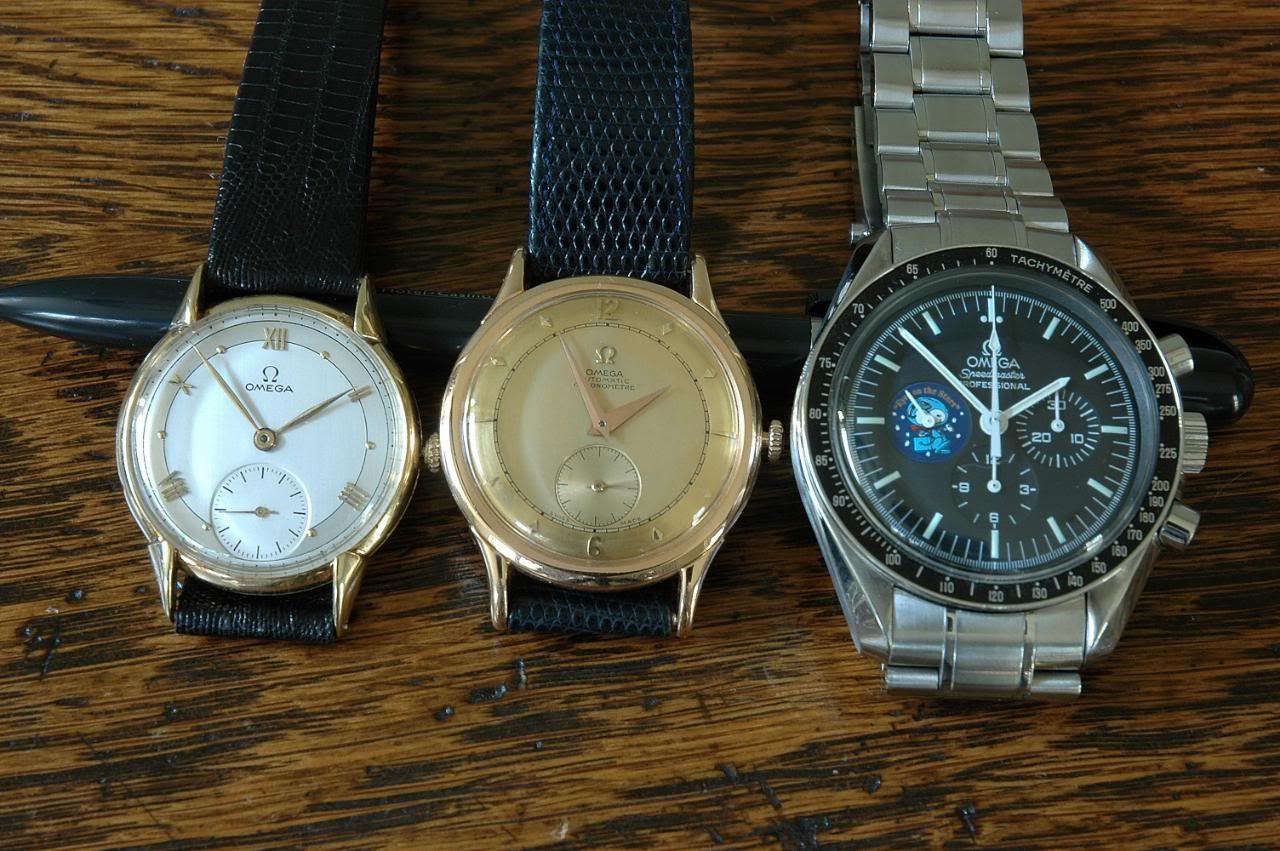 1934 (or so) Omega Cushion
1934 (or so) Omega Cushion
This one has a calibre 26.5 T1. I have been told Tissot made the 26.5 for Omega. It is also described as calibre 26.5 SOB.
It ran poorly, and came back running poorly, losing a couple of minutes a day. My watchmaker says it needs parts he can't find and doesn't care to make. He cleaned it up, adjusted as best he could, and didn't charge me. (I'll give it back to him and give him some more time -- I demanded at least three of the seven watches he had back, so he fulfilled my demand . . .)
Fixed wire lug case with a strap I haven't yet changed
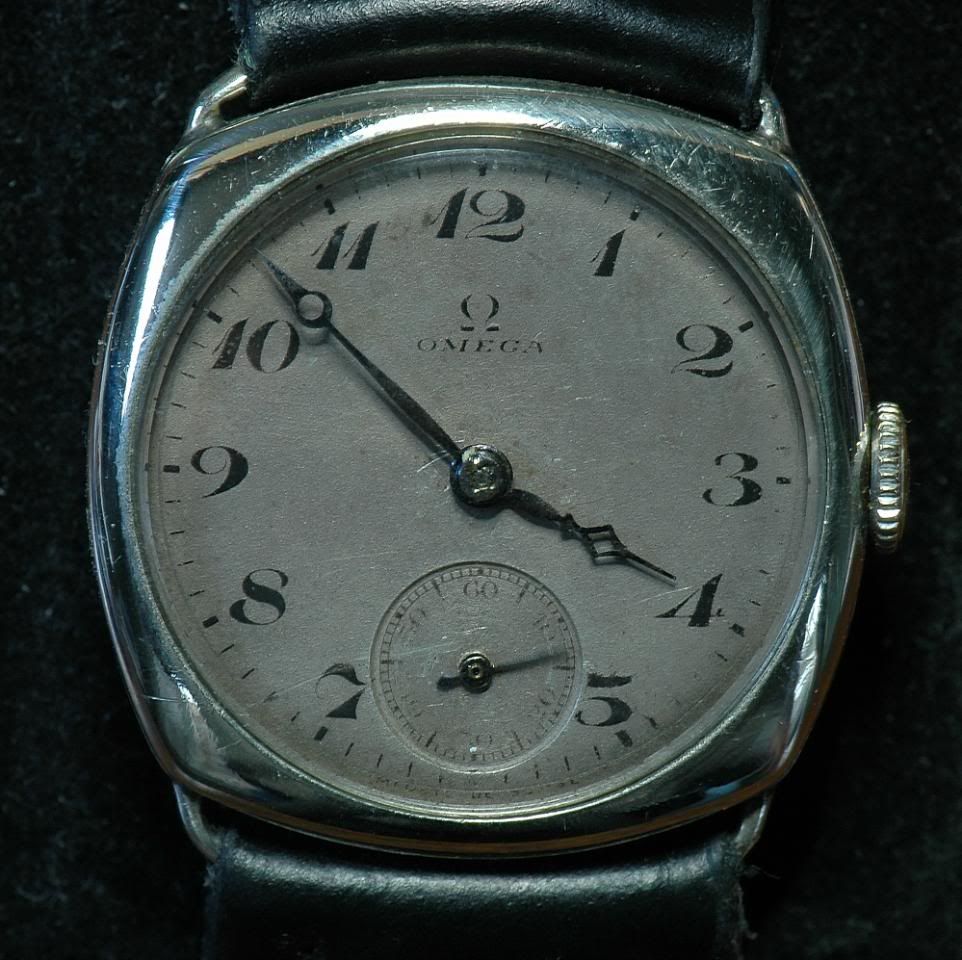
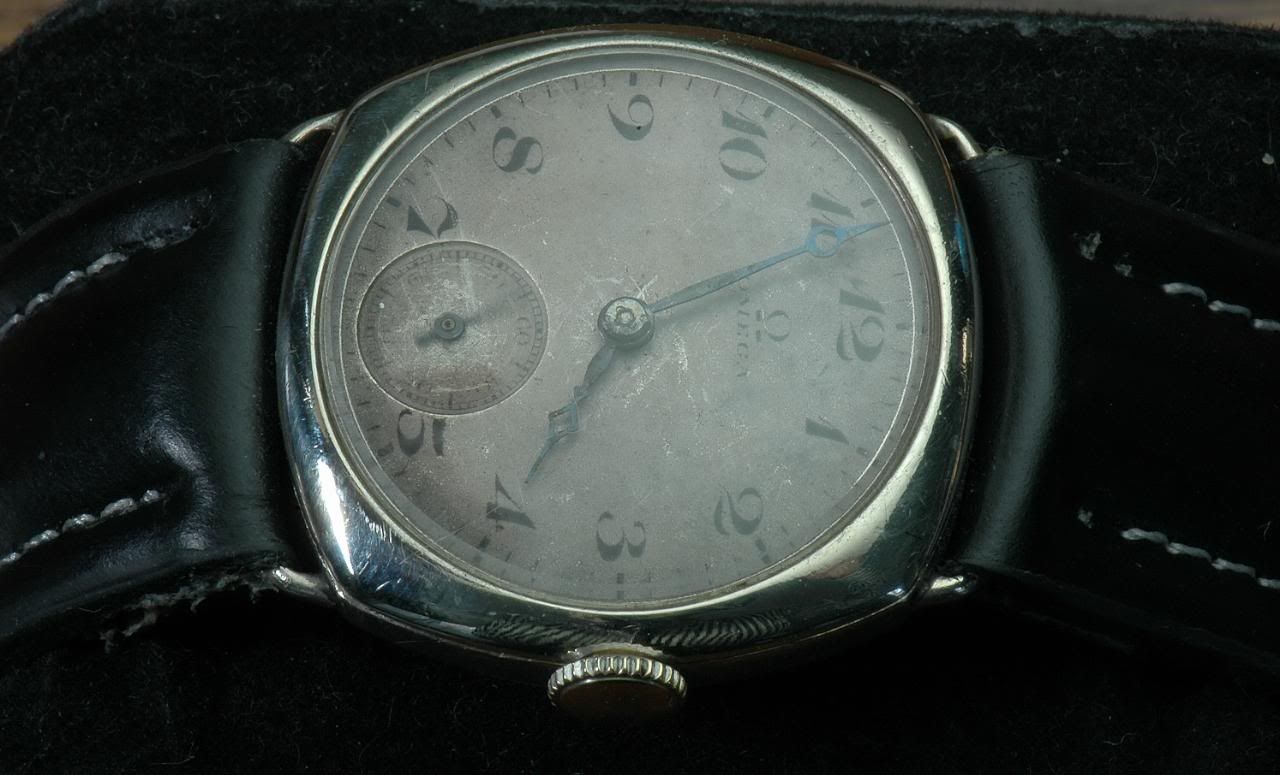
The rough looking and apparently unrepairable movment
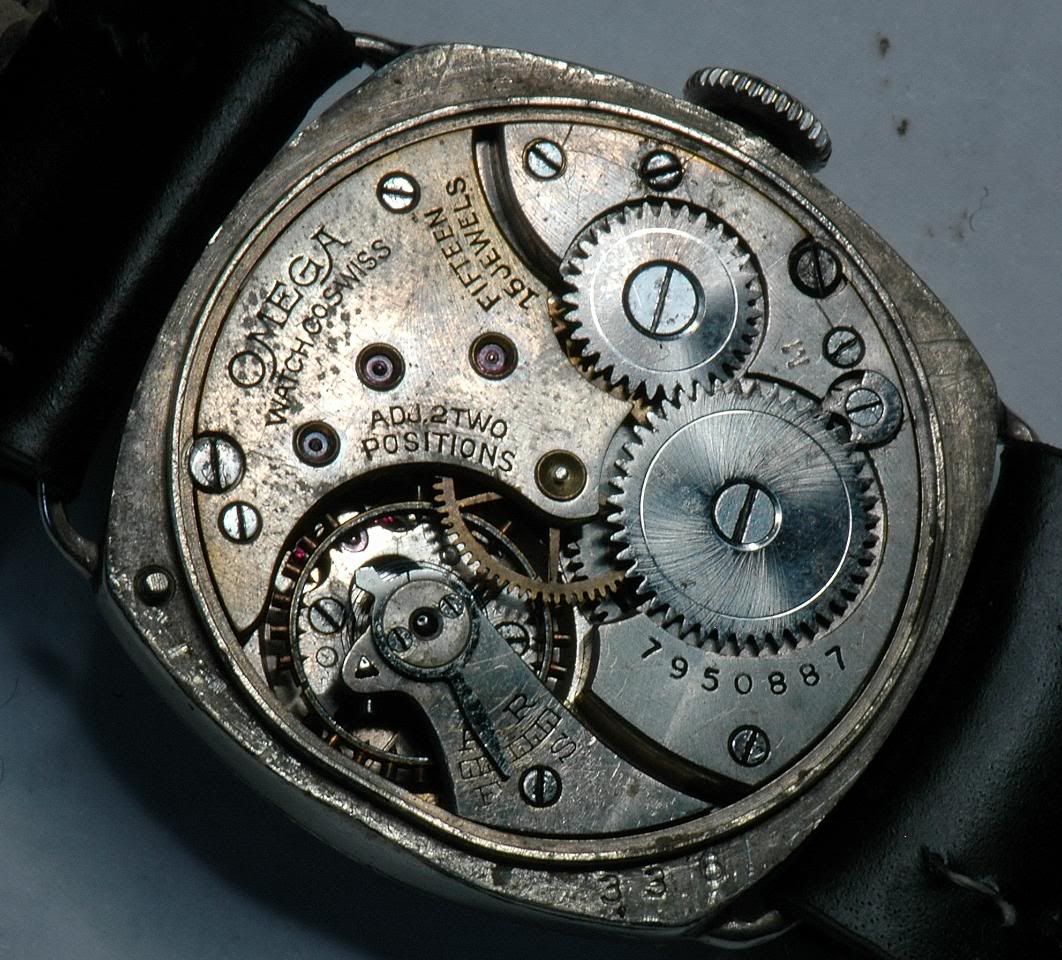
My typical results when trying to photo the movement identification . . .

But I just like shooting photos of movements . . .
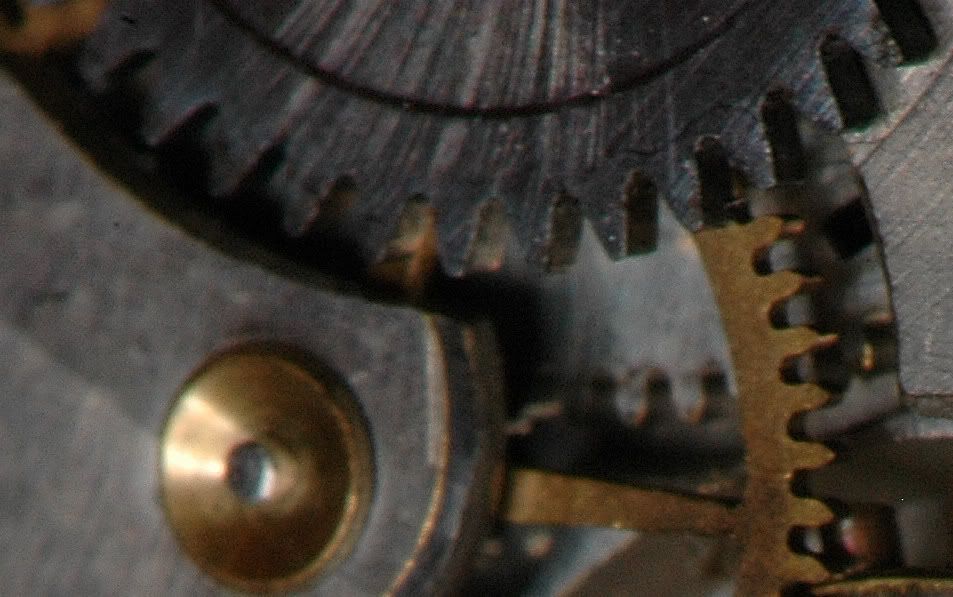
The case is an early nickel stainless steel, and was quite tarnished originally


This view shows more watchmakers marks
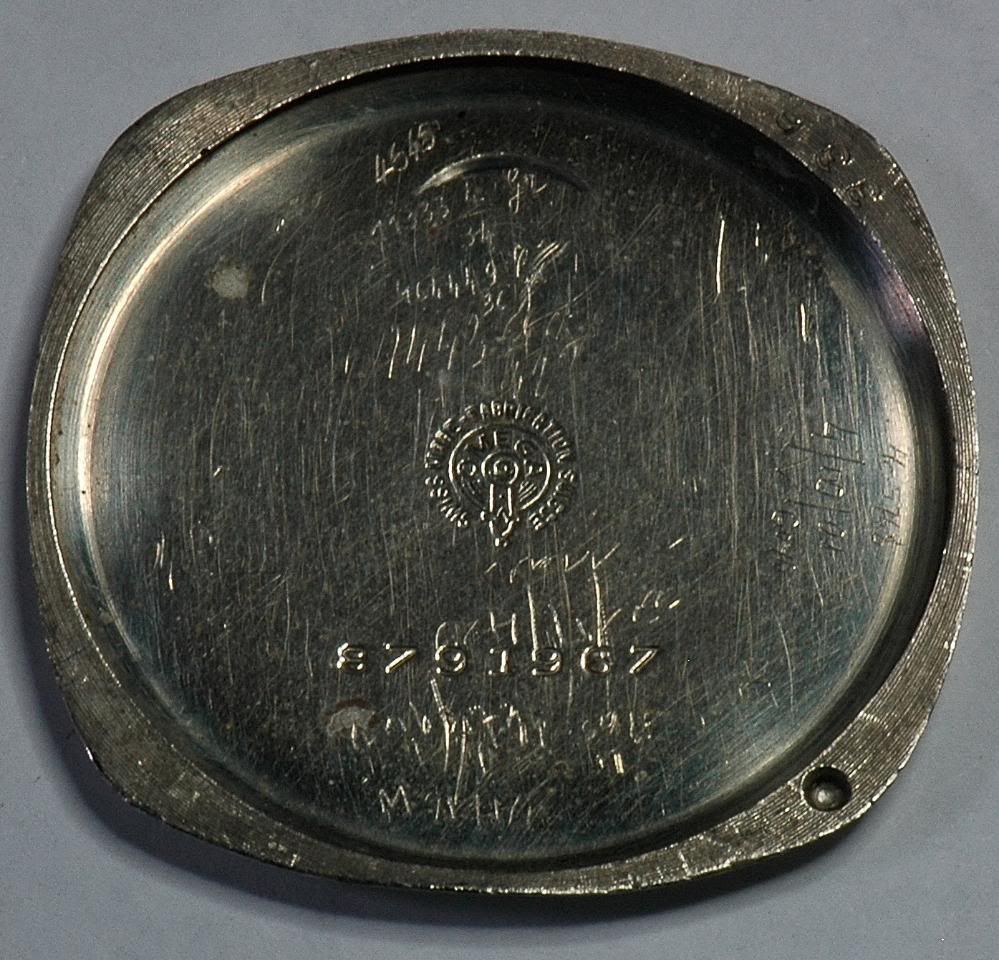
The aged dial is what I love
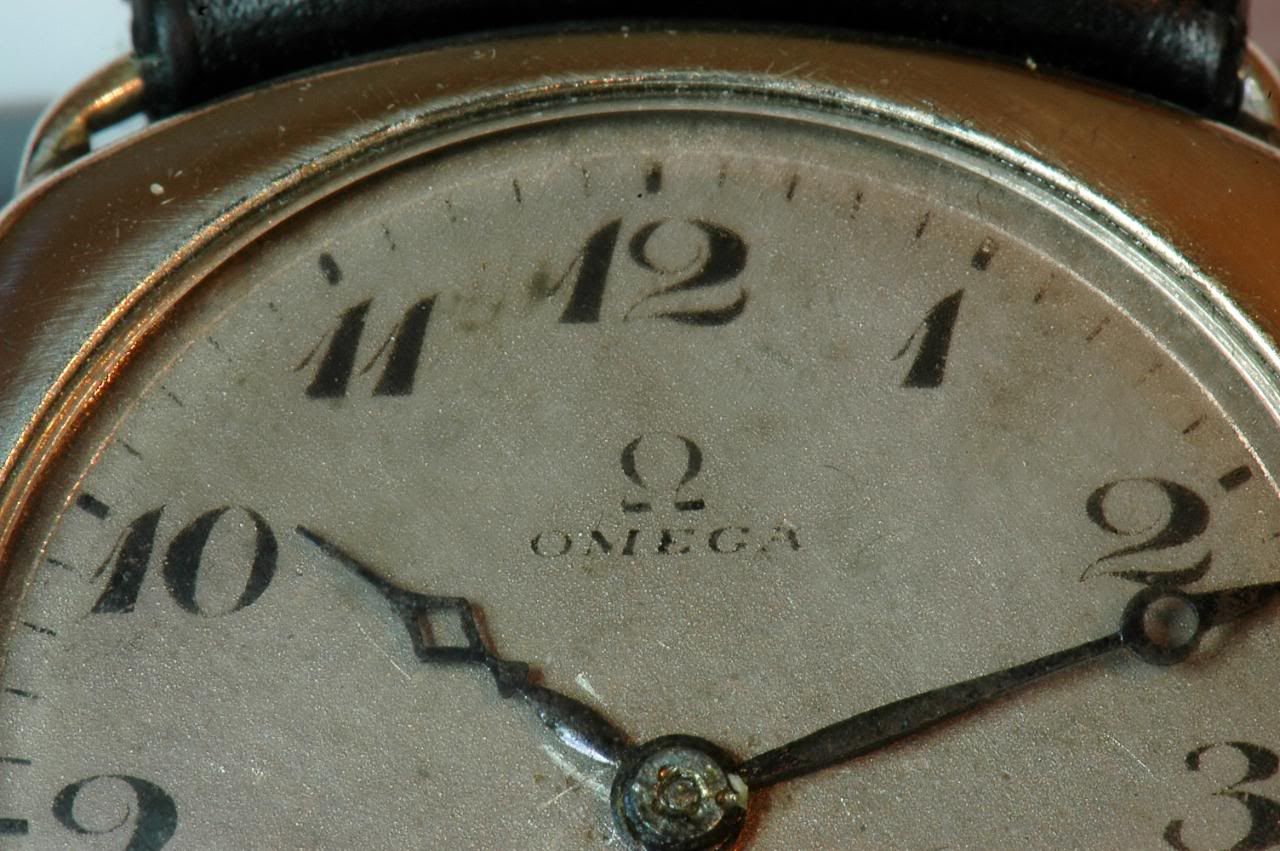
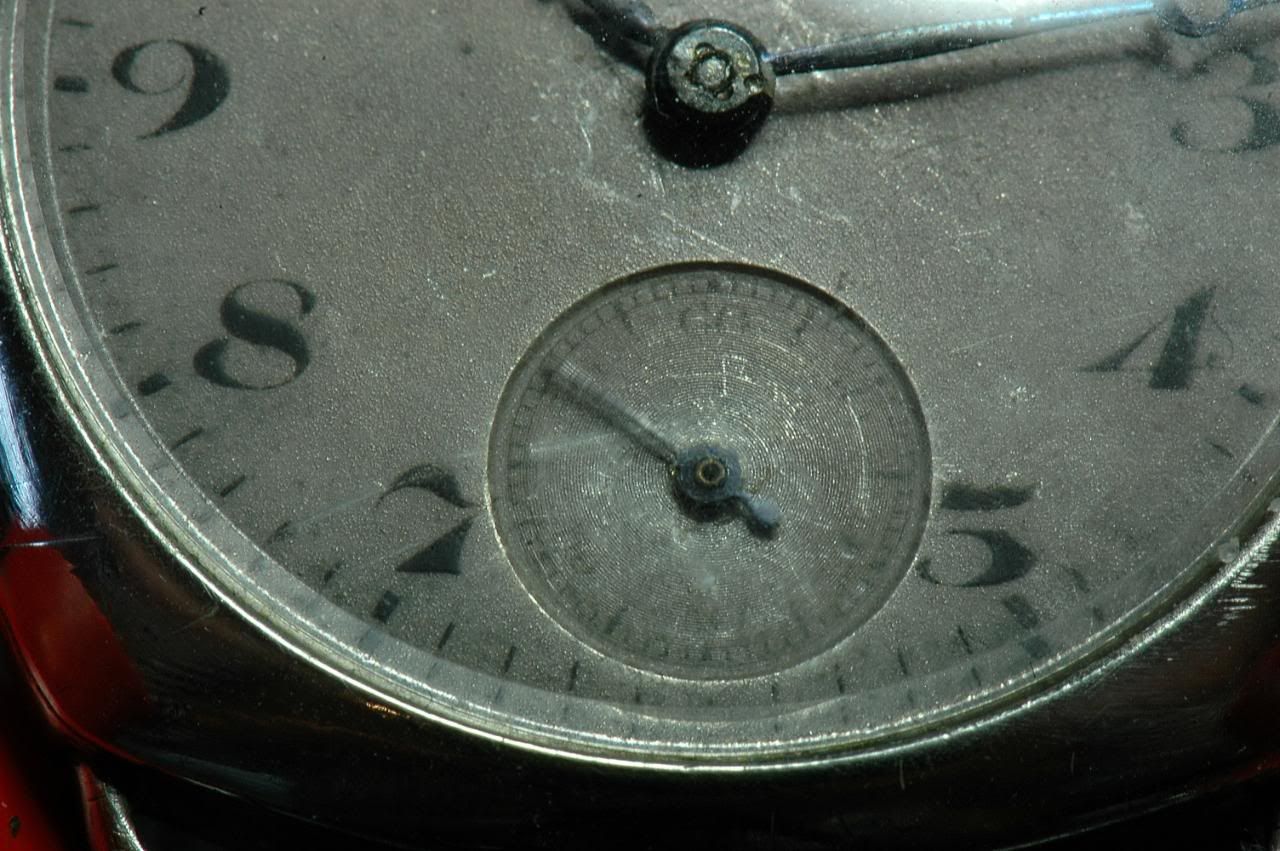 My wife's 1966 Omega Jewelry Backwinder
My wife's 1966 Omega Jewelry Backwinder
This somewhat unusual and lovely piece runs on a manual wind calibre 690. The baguette shape requires the movement to be "stacked", per my watchmaker. He fabricated a click spring for this watch.
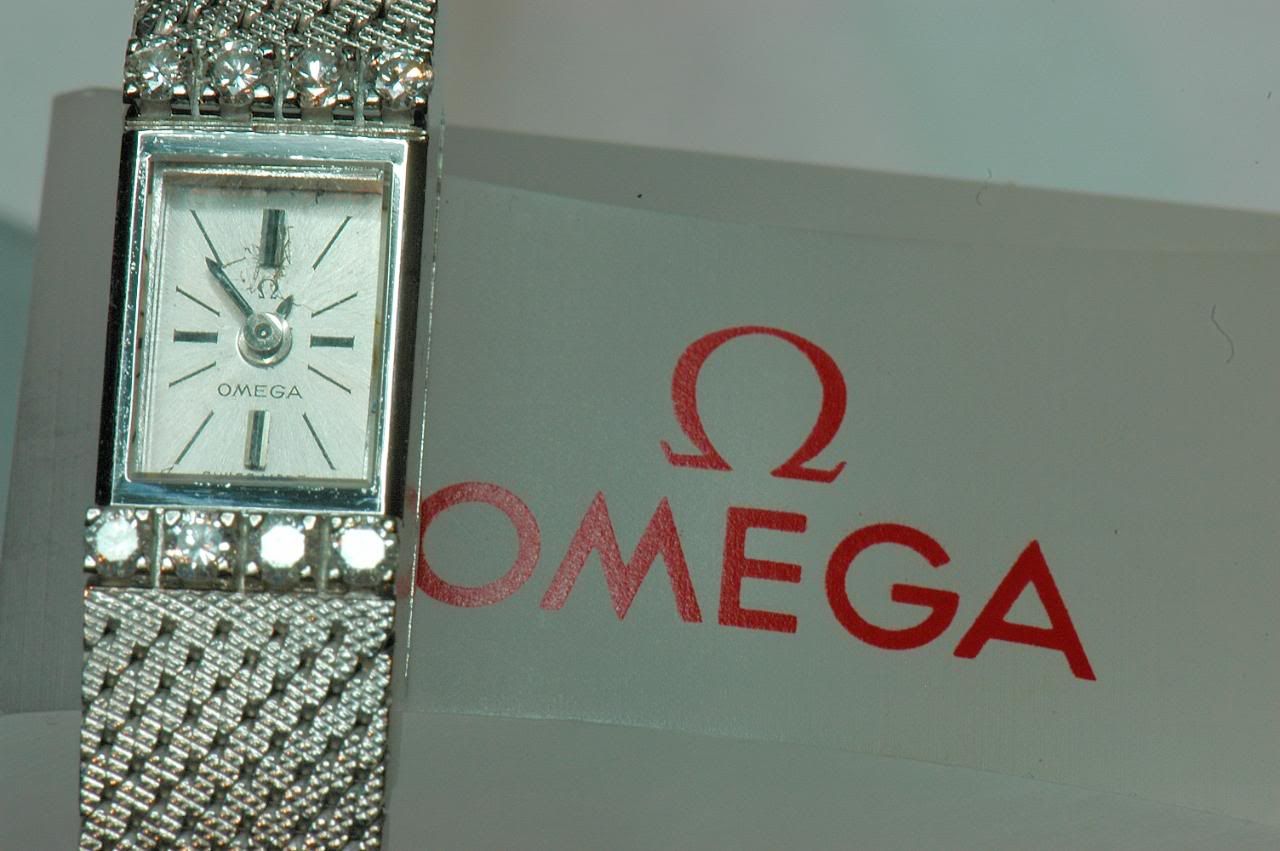
The dial is scratched, but as my wife says, its too small to see anyway

Something to give you a sense of scale . .. .

Why is it a backwinder?

The bracelet and case are 18k white gold

And the entire thing is delicately sized, but quite strong
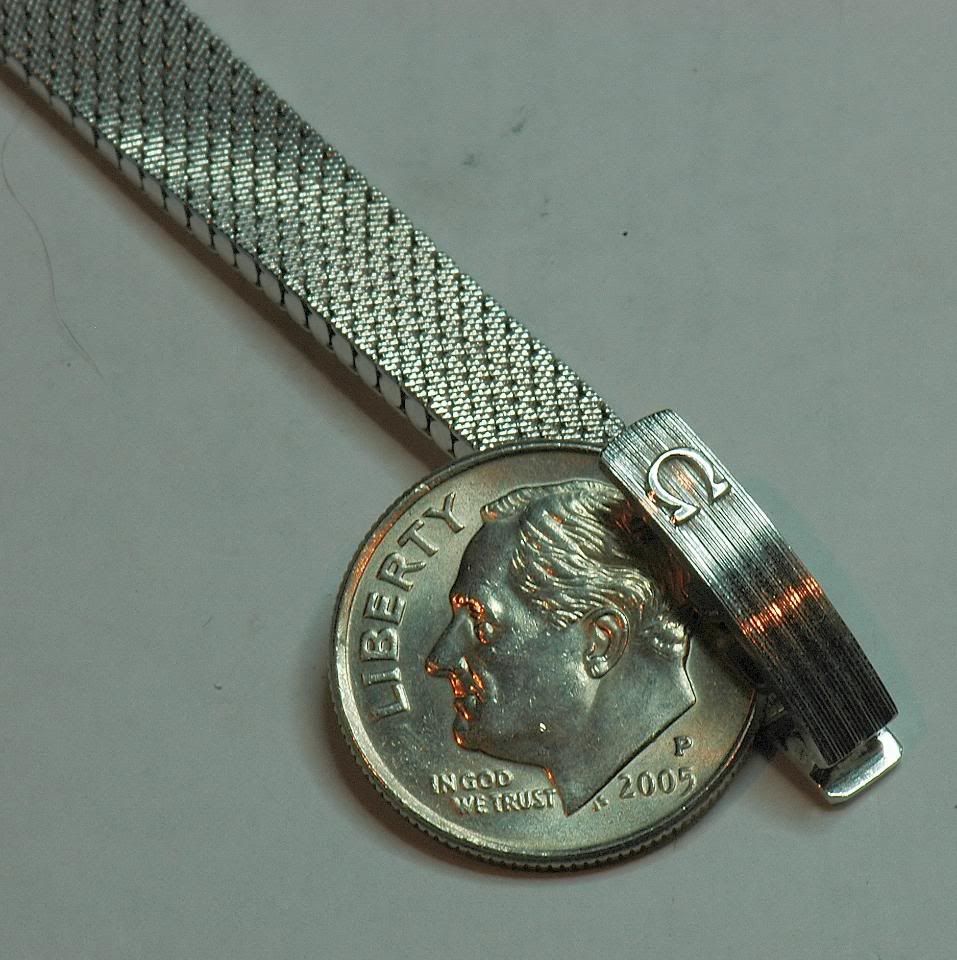
Again, I find the movment fascinating
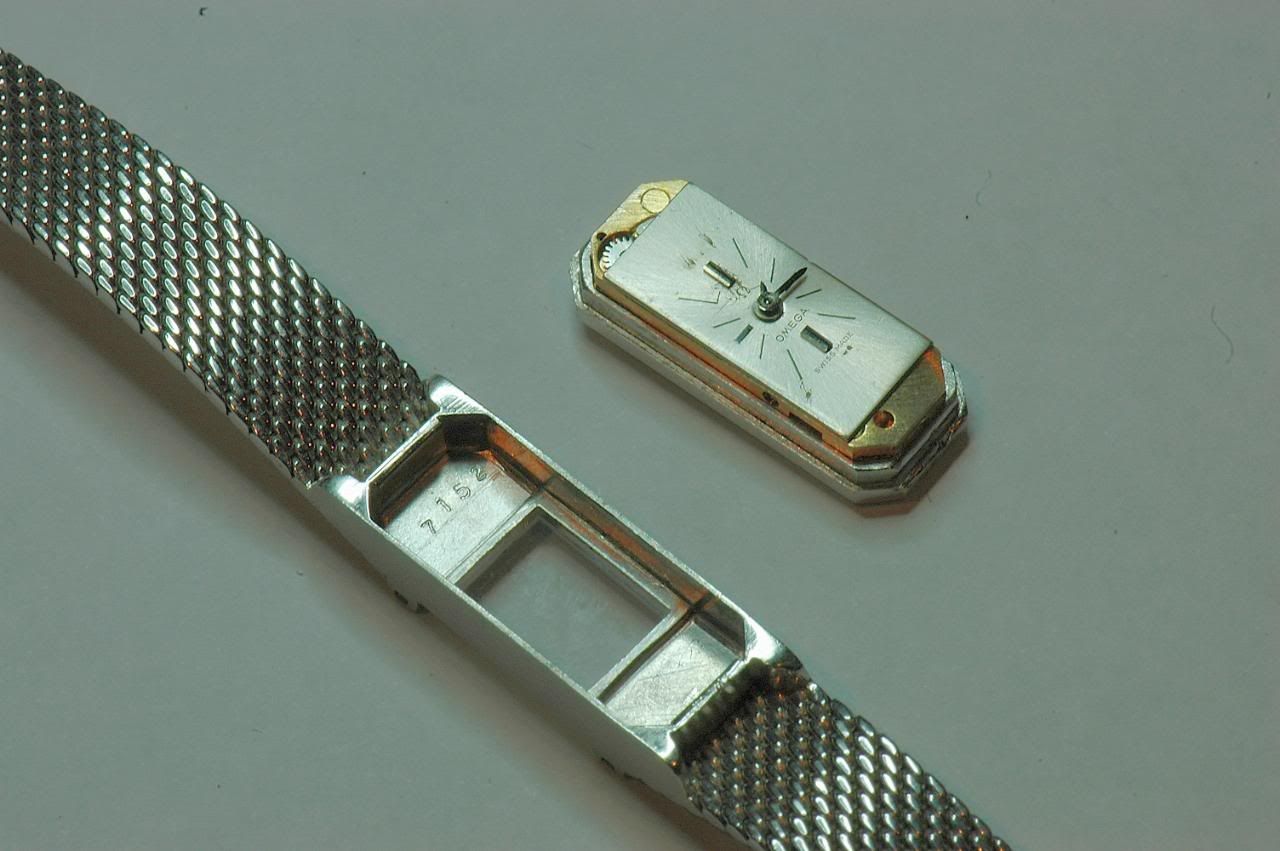

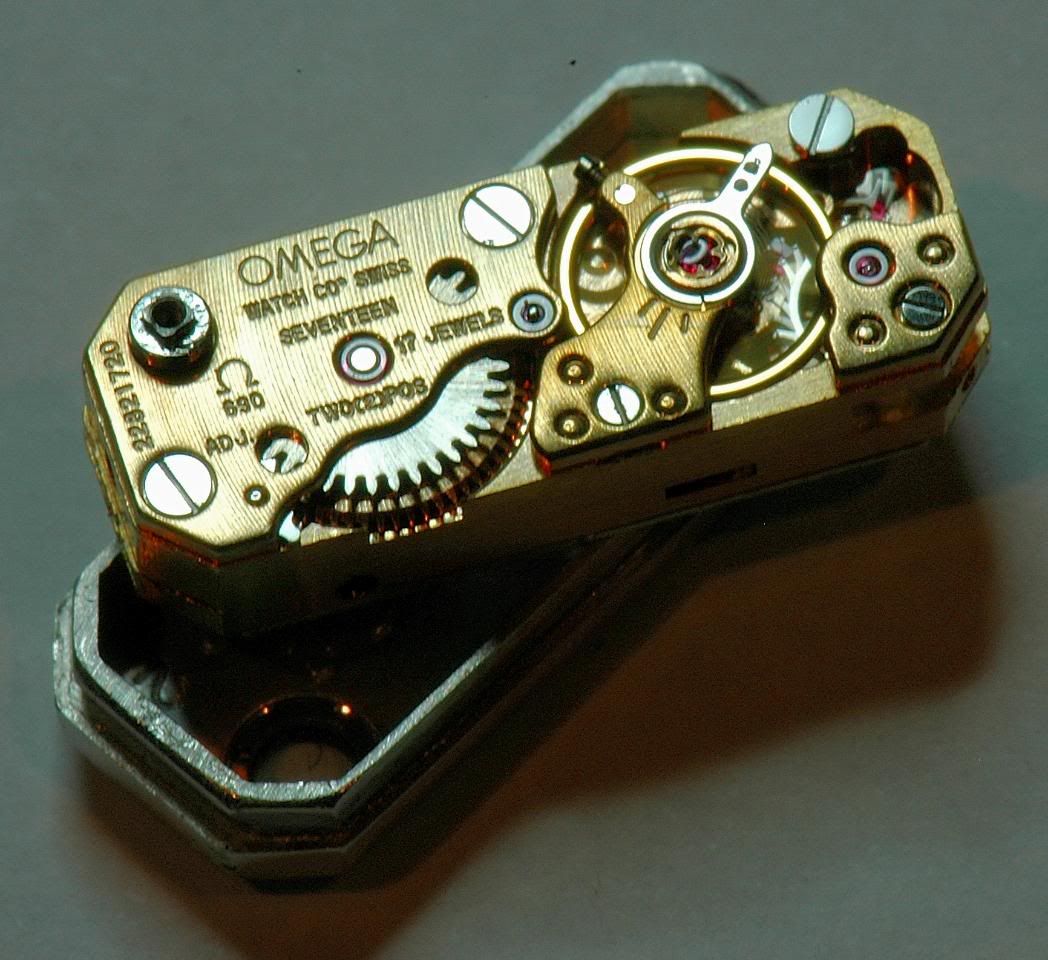
Look at the size of this thing!

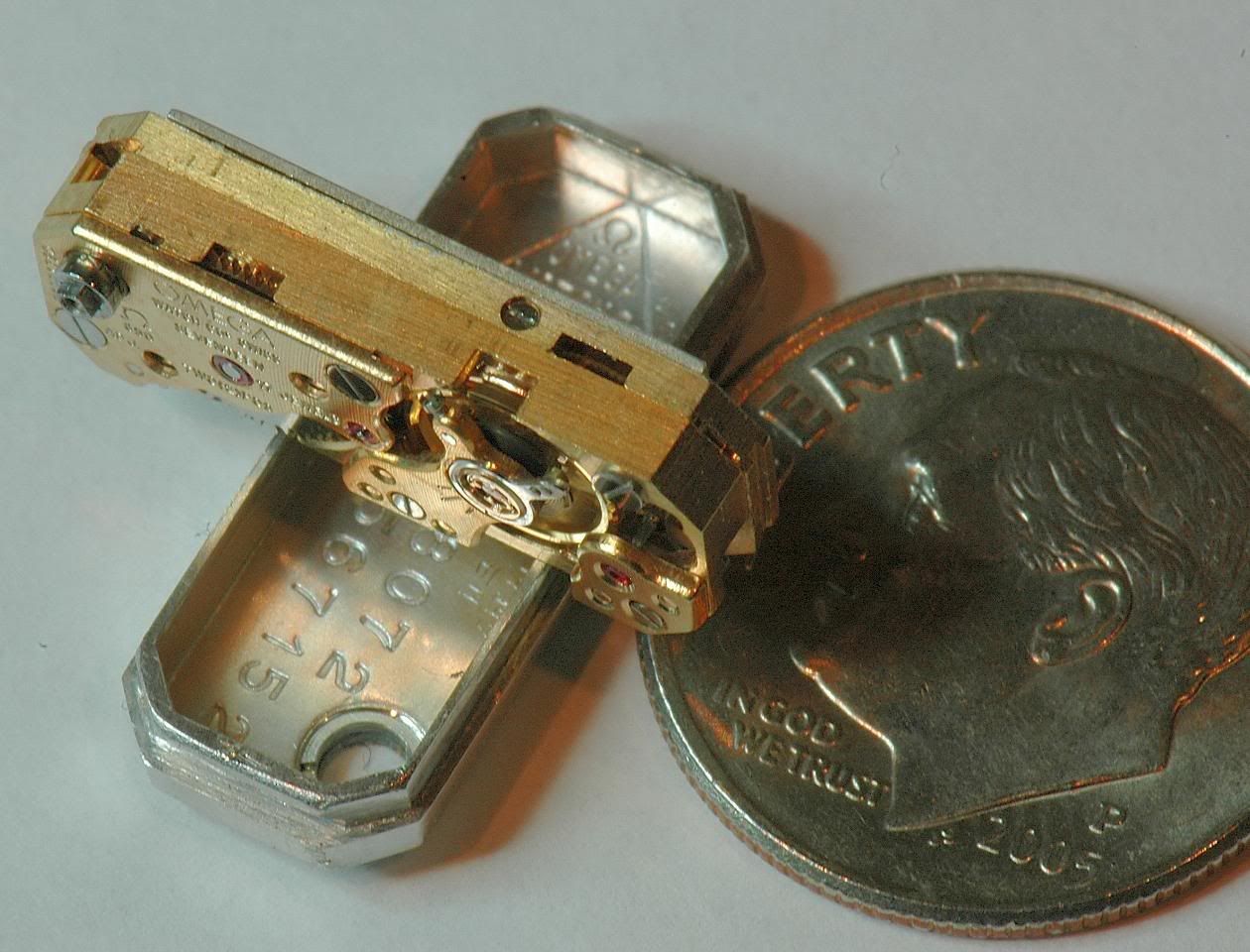
And a parting shot


































